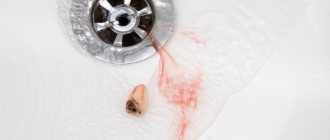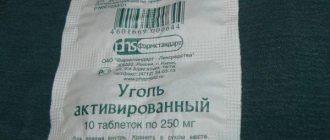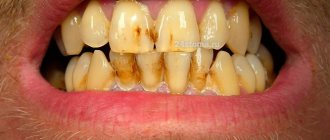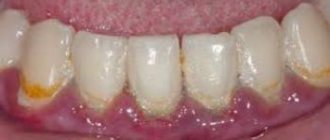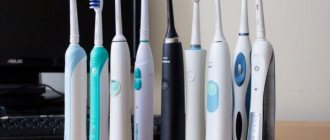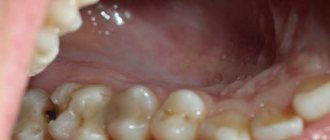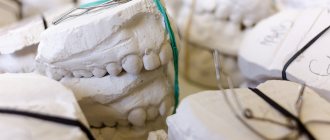Dry mouth (xerostomia) is a condition characterized by insufficient production of saliva by the salivary glands.
Dry mouth can occur from time to time: due to dehydration caused by a cold, breathing through your mouth while sleeping, stress, or a situation that makes you nervous. If dry mouth is a common symptom, it may be related to a medical condition that needs to be diagnosed and treated.
Xerostomia may be accompanied by a burning sensation in the mouth, dry throat, difficulty speaking, chewing food and swallowing, bad breath, the appearance of ulcers on the oral mucosa, dryness, flaking of the skin on the lips and the appearance of cracks on them, and dry tongue.
Functions of saliva in the body
Xerostomia is a condition when the salivary glands stop producing enough saliva. This physiological fluid performs certain tasks in the mouth:
- wetting and softening pieces of food;
- fight against viruses and bacteria;
- lubricating the throat for smooth swallowing of food;
- maintaining the correct biological environment in the mouth;
- protecting teeth from caries.
Without the protective function of saliva, it is easier for a person to get infectious diseases.
Symptoms accompanying dry mouth
In the absence of saliva, the body is unprotected, and therefore “attracts” many accompanying symptoms. Dry mouth is accompanied by: Thirst, a person cannot get drunk;
Feeling of “sticking together” of the tongue, gums and palate;
Bad breath;
The appearance of cracks and sores on the lips;
Tooth decay;
Difficulty swallowing food and water. The throat feels closed and hurts;
Irritation on the tongue;
Loss of taste in food;
Hoarseness.
With a constant lack of saliva, the digestive system begins to suffer, teeth and gums suffer, and problems with the ears and nasopharynx begin. At this time, it is dangerous to move along the street without a mask, as there is a high risk of catching any infection.
If you have dry mouth, the reasons may be natural.
When should you see a doctor?
It is necessary to make an appointment with a doctor if dry mouth is often bothersome, for diagnosis and treatment, if the symptom is not associated with obvious causes - smoking, alcohol abuse, stress, anxiety, etc.
The doctor will take anamnesis, study your medical history, medications you take, and conduct a physical examination. If necessary, he will prescribe laboratory diagnostics, ultrasound of the salivary glands, and conduct a special test to measure the amount of saliva produced. If Sjogren's syndrome is suspected, a biopsy from the minor salivary glands of the lower lip will be required.
Treatment for dry mouth depends on the cause. If the symptom is caused by a medication, the doctor will select a replacement drug or adjust its dosage. He may also recommend various products to moisturize the mouth, stimulate saliva production and relieve xerostomia.
Natural Causes of Dry Mouth
People say that dry mouth appears with age, which means there is no way out, but this is not true. Xerostomia is associated with very specific causes, therefore, they need to be detected and eliminated. Dry mouth can cause:
- Dehydration. If a person hardly drinks water, then there is nothing to produce saliva from. The skin becomes dry and urine is scanty.
- Excessive consumption of salty foods, especially at night.
- Excessive consumption of coffee or hot spices “dries out” the mouth.
- High air temperature. At elevated temperatures, the liquid evaporates too quickly and must be replenished. If this is not possible, then the throat dries out and almost no saliva is released. Temperature dehydration occurs not only in hot weather, but also in winter, when batteries dry out the air.
- Stressful situation. There is an assumption that fear makes your throat dry, and this statement has a basis. An exciting event, preparation for an important event or speaking in public provoke a decrease in saliva production.
- Runny nose. With a stuffy nose, a person is forced to breathe through the mouth, the saliva dries out and does not have time to be released again.
- Dry mouth during sleep. When a person sleeps with his mouth open, he wakes up with a “dry” throat. As a rule, this is a sign of apnea - short-term holding of breath during sleep. A deviated nasal septum also causes your mouth to open during sleep.
Drinking alcohol causes dry mouth and extreme thirst in the morning. Poisoning with low-quality products or overeating gives the same effect. Smoking causes a decrease in saliva production, and consequently, dry mouth.
Sometimes the effect of the absence of saliva is associated with a deficiency of vitamins A and B in the body.
Dry mouth after taking certain medications
Any medications have side effects, one of them is xerostomia. As people age, they take more medications, which is why older people are more likely to suffer from dry mouth. Xerostomia is caused by drugs:
- from edema;
- from allergies;
- from diarrhea;
- from high blood pressure;
- antispasmodics;
- antibiotics;
- tranquilizers;
- psychotropic drugs.
- In total there are about 500 items. If the symptom persists, you should consult a doctor to replace the drug with a harmless analogue.
Chemotherapy for cancer also causes dry mouth.
Radiation therapy as a provocateur of xerostomia
Irradiation of the head and neck for cancer of the oral cavity and pharynx can lead to disruption of the salivary glands. The function is restored over time, but sometimes the problem remains for life. For such patients, there are special aerosols that compensate for the lack of saliva.
Diseases that cause dry mouth
In some pathologies, severe dry mouth can be a symptom, in others it accompanies the course of the disease.
Inflammatory diseases of the oral cavity
With inflammation of the gums or dental diseases, the amount of saliva may decrease due to greater fluid consumption for chewing food. The same situation occurs with a bad prosthesis. The salivary glands simply do not have time to replenish their reserves.
Diabetes
Excess weight is accompanied by metabolic disorders. If you are always thirsty and your throat is “dry”, and trips to the refrigerator are becoming more and more frequent, you should check your blood sugar level and make an appointment with an endocrinologist.
“Dry mouth and thirst are the first signs of diabetes.”
Especially if the above symptoms are accompanied by repeated visits to the toilet at night.
Infections
Infectious diseases are often accompanied by vomiting and diarrhea accompanied by fever. Losing a large amount of fluid causes dry mouth, which, usually, in this condition, few people pay attention to. However, this cannot be ignored. With severe intoxication, fluid loss is an additional risk factor, so the patient needs to drink a lot. Water removes toxins from the body and replenishes fluid deficiency.
Endocrine diseases
Some endocrine diseases may be accompanied by a decrease in the amount of saliva produced, for example, thyroid dysfunction. In women, dry mouth may be associated with pregnancy or menopause.
Xerostomia in autoimmune diseases
With autoimmune diseases, a person’s defenses fail and they attack their own body. This damages the entire system. The second name for these diseases is systemic.
As a striking example, consider Sjögren's syndrome. The disease affects the salivary glands, causing dry mouth and difficulty swallowing. The oral mucosa becomes bright pink.
Xerostomia in diseases of the brain and nervous system
During a stroke, partial death of brain cells occurs; it is difficult to predict which functions will be affected. Dryness of the oral mucosa can also occur with Alzheimer's or Parkinson's disease, pathologies of the trigeminal nerve and circulatory system.
Gastrointestinal tract and dry mouth: what diseases require an appointment with a gastroenterologist
Particularly noteworthy are diseases of the gastrointestinal tract. Xerostomia is not one of the symptoms of these diseases, but may accompany them:
- A stomach ulcer, as a result of smoking or drinking alcohol, is necessarily accompanied by dry mouth.
- Gastritis, acquired through dietary abuse or as a result of stress, also does not exist without this symptom.
- Acute pancreatitis is accompanied by vomiting and diarrhea, resulting in dehydration and its symptom – xerostomia.
Gastrointestinal diseases should not be joked about, so you need to visit a gastroenterologist and start treatment.
Acute pathologies requiring hospitalization
Acute pathologies, in addition to severe pain, also cause dry mouth. Appendicitis and intestinal obstruction, as well as perforation of the ulcer, require urgent surgical intervention.
Sand creaked on the teeth of Homo naledi
Discovery of Homo naledi
(1,500 remains from at least 15 individuals) is a treasure for paleoanthropologists. The flood of research into this unprecedented collection has only just begun. Now experts have taken on the teeth of amazing people from the South African Rising Star Cave. What's special about these teeth (besides their small size)? Scientists drew attention to a large number of enamel damage - small chips, which are especially common on the molars of the naledi. What caused them? If such injuries occurred during life, then their cause should have been some fairly hard objects that fell into the person’s mouth.
Read this and other anthropological news on the website Anthropogenesis.ru
Share
Share
Examples of chipped teeth of Homo naledi
I.Towle, JD.Irish, I.De Groote / Am J Phys Anthropol., 2017
Tooth enamel is pretty darn hard and can withstand forces of over 1,000 newtons. However, teeth can also be destroyed, and the nature of their damage indicates the diet and lifestyle of the owner. Chips can occur upon contact with a variety of objects - from berry seeds to seeds and nuts. In addition, teeth suffer if you eat food contaminated with sand - for example, rhizomes and tubers just dug out of the ground.
Comparing the teeth of different apes, experts noticed that orangutans have chipped chewing teeth six times more often than chimpanzees and gorillas. This is likely due to differences in diet: gorillas eat leaves, while chimpanzees prefer soft fruits. Orangutans have a diet that contains a lot of solid foods. In humans, it has been observed that among hunter-gatherers, chips predominate on the back teeth, while among farmers and herders, chips predominate on the front teeth.
What about fossil hominins? Anthropologists studied the surface of the teeth of South African Australopithecus and Paranthropus. Damage to ancient teeth has been interpreted as the result of eating rhizomes, seeds and nuts, or even chewing on bones. Chips in the enamel were also found in early East African hominids, as well as in Neanderthals.
In a new study, experts analyze chips on the permanent teeth of Homo naledi
, and the data obtained is compared with information from other fossils and modern primates (including humans).
The scientists had 156 permanent naled teeth in their hands, of which 126 were selected for analysis, discarding damaged and unerupted ones. The collection was compared with data on the teeth of Australopithecus africanus (265 samples), Paranthropus robustus (235), and extensive databases on chimpanzees, gorillas and baboons. In addition, scientists used information about seven collections of human teeth (Inuit, ancient Rome, Epipaleolithic Morocco, medieval Norway, etc.)
How was the analysis carried out? The teeth were examined under a magnifying glass, identifying intravital chips - only those damages on which traces of subsequent abrasion were visible were taken into account. The size of the chip, its position and the number of chips for each tooth were recorded.
What is the outcome of the study?
44 percent of Naledi's permanent teeth were chipped. This is more than that of other hominids of South Africa (however, let me remind you that the study used data on only two species - Africanus and Paranthropus robustus. There is no data on early Homo of South Africa. For some reason, even the teeth of Australopithecus sediba, described by the same Lee Berger. However, there is a very small collection there, because only two individuals have been properly described). There were especially many chips on naledi molars—54 percent of the molars contained such damage. This is twice as much as that of Australopithecus africanus and more than three times that of Paranthropus.
In terms of the number of damages on the teeth, the naledi have surpassed modern apes and are more likely to be similar to some historical groups of people (although the location of the chips is more reminiscent of australopithecines and baboons).
Most chips are small. The authors point out that there is more damage on the surfaces between the teeth, and also note that chips are more common on right teeth than on left ones. This pattern has already been found among ancient hominids, and experts associate it with right-handedness: ancient people brought food to their mouth and held it with their right hand.
In total, of the 12 individuals whose teeth were analyzed, chips were found in nine. However, of the three remaining individuals, two are represented by single teeth, and the teeth of the third are worn away.
Experts came to the conclusion that the naledi’s teeth were regularly seriously injured, and the reason was most likely associated with chewing some specific food. Damage of this kind is typical for life in arid areas, and also where, I quote, “ash clouds occur following volcanic eruptions” - ash probably also ends up in food. Here it is appropriate to recall baboons that live in arid areas - these primates have a lot of sand in their food. By the nature of the damage - the predominance of small chips on the back teeth - hamadryas and olive baboons resemble naledi.
And here are the human groups with which the people from Rising Star showed similarities:
- Paleo-Indians from Cape Cod (VX century AD, USA) - frequent chipping of molars (frequency 43 percent). The food contained a lot of sand, gravel and fragments of shellfish.
- Taforalt (11-12 thousand years ago, Morocco) - these ancient people regularly chewed snail shells and fruit seeds, chewed seeds and nuts. True, it is impossible to make a correct comparison with them, since it was customary for the Taforalans to remove the upper incisors.
- Finally, Vicenne Campochiaro (IV-X centuries, Italy) - sand in food again.
What exactly did they chew on naledi?
Shells, nuts, tubers? The authors announce the next study, where they promise to examine in detail the nature of wear on icing teeth. The researchers themselves are inclined towards the sand version in combination with relatively soft food. We just have to wait for a new article. Alexander Sokolov
Original text on the website Anthropogenesis.ru



